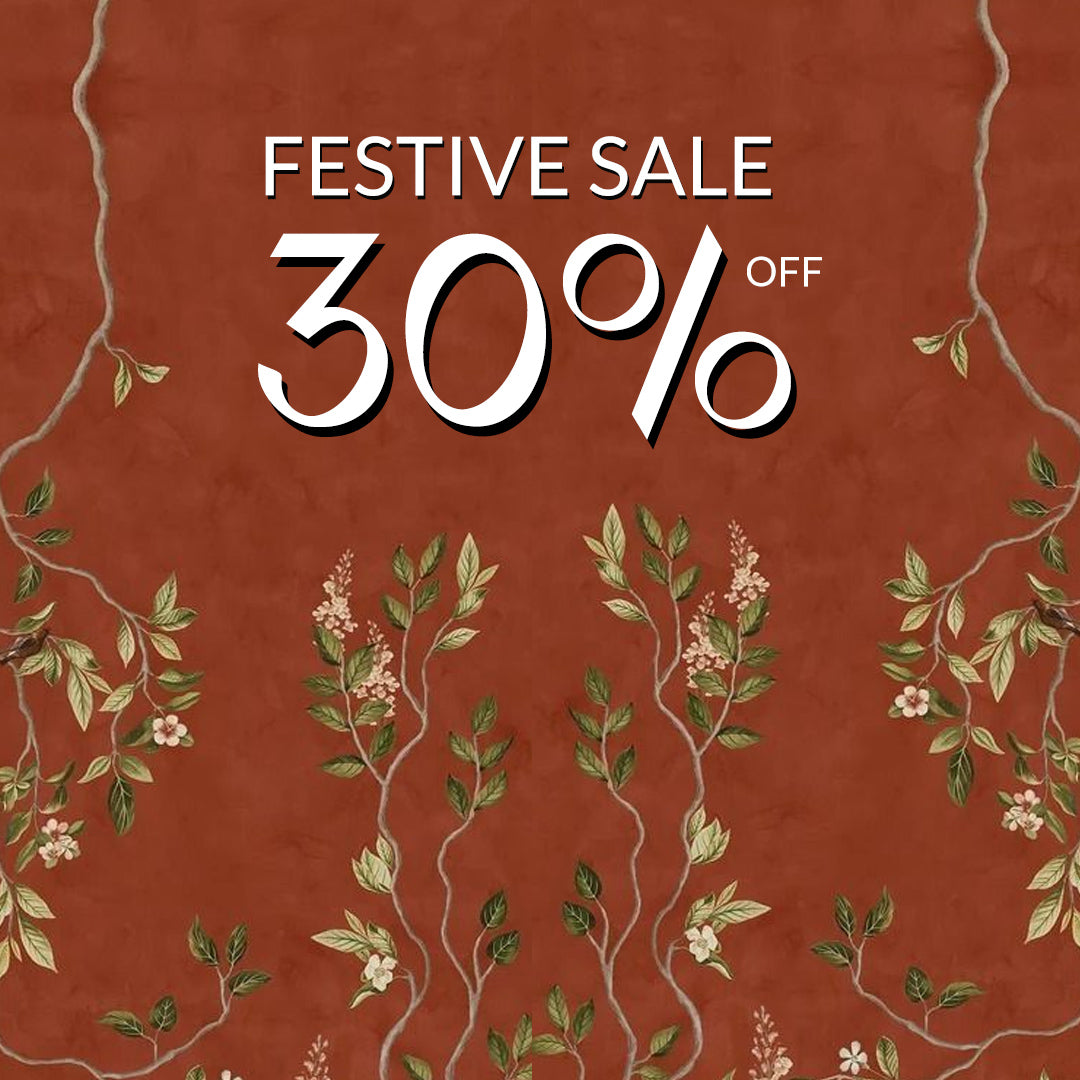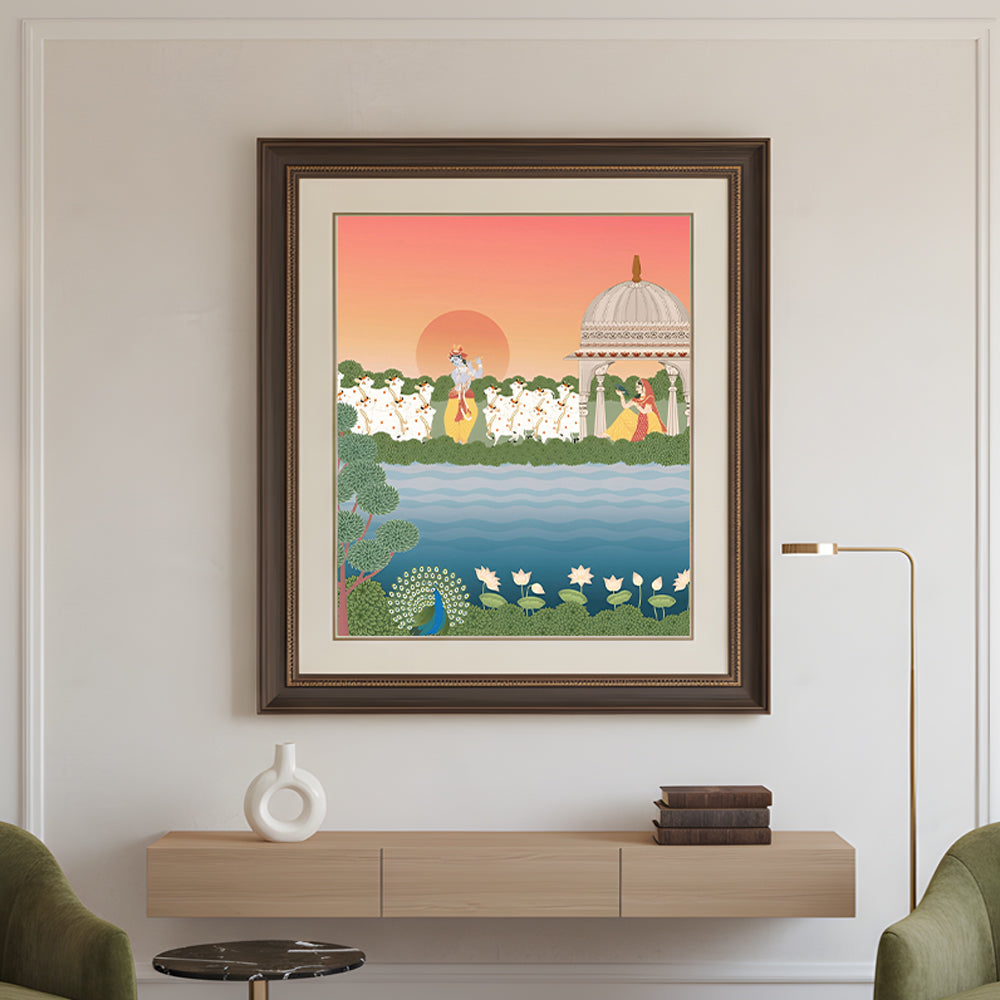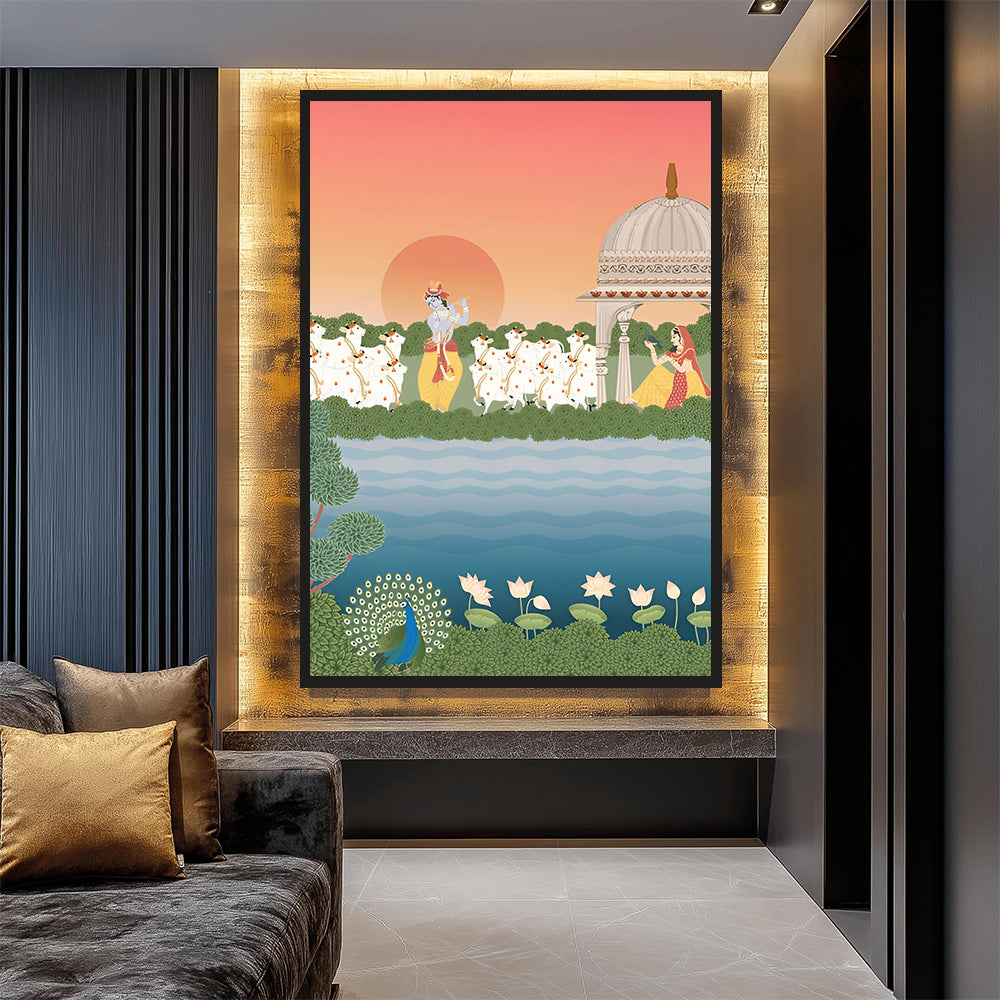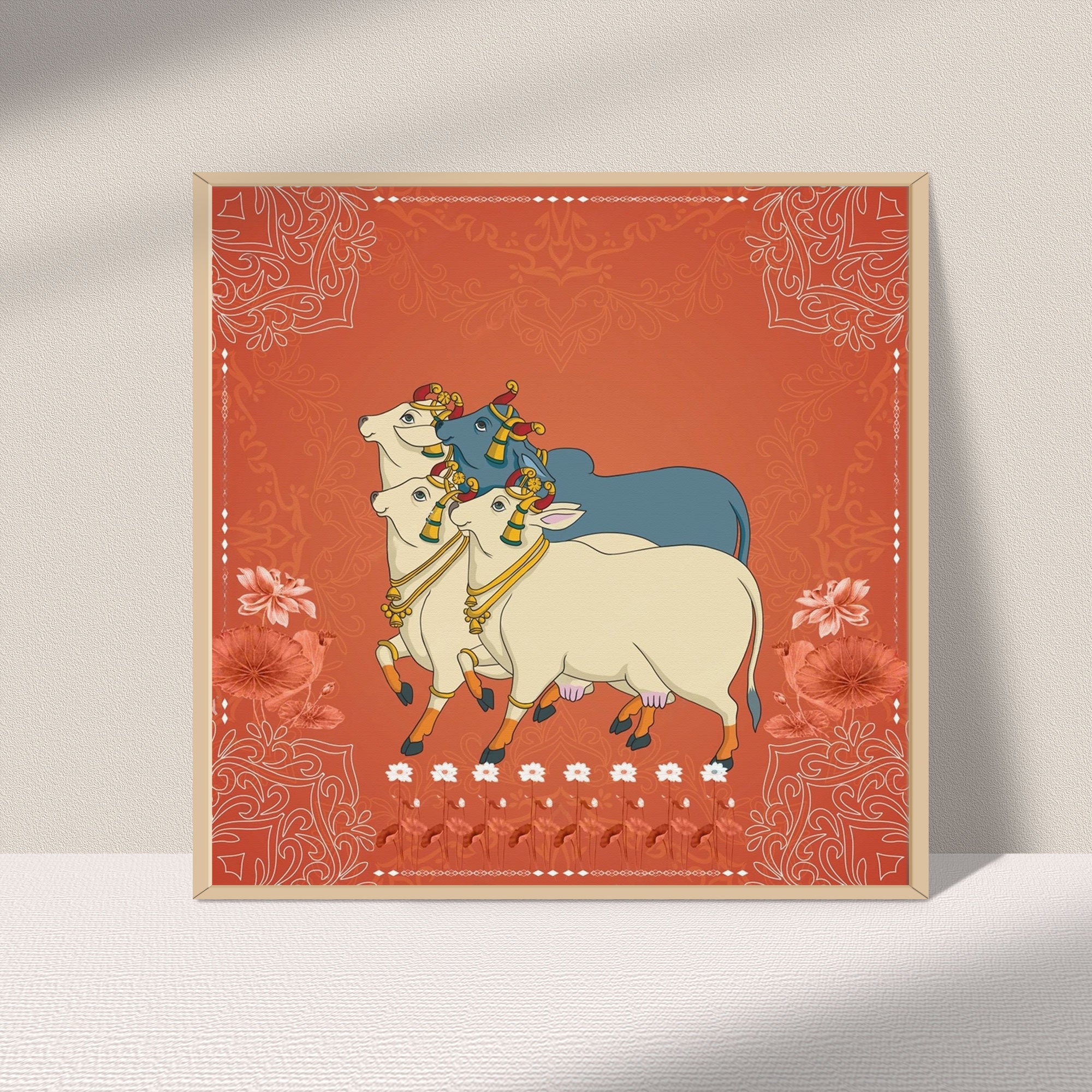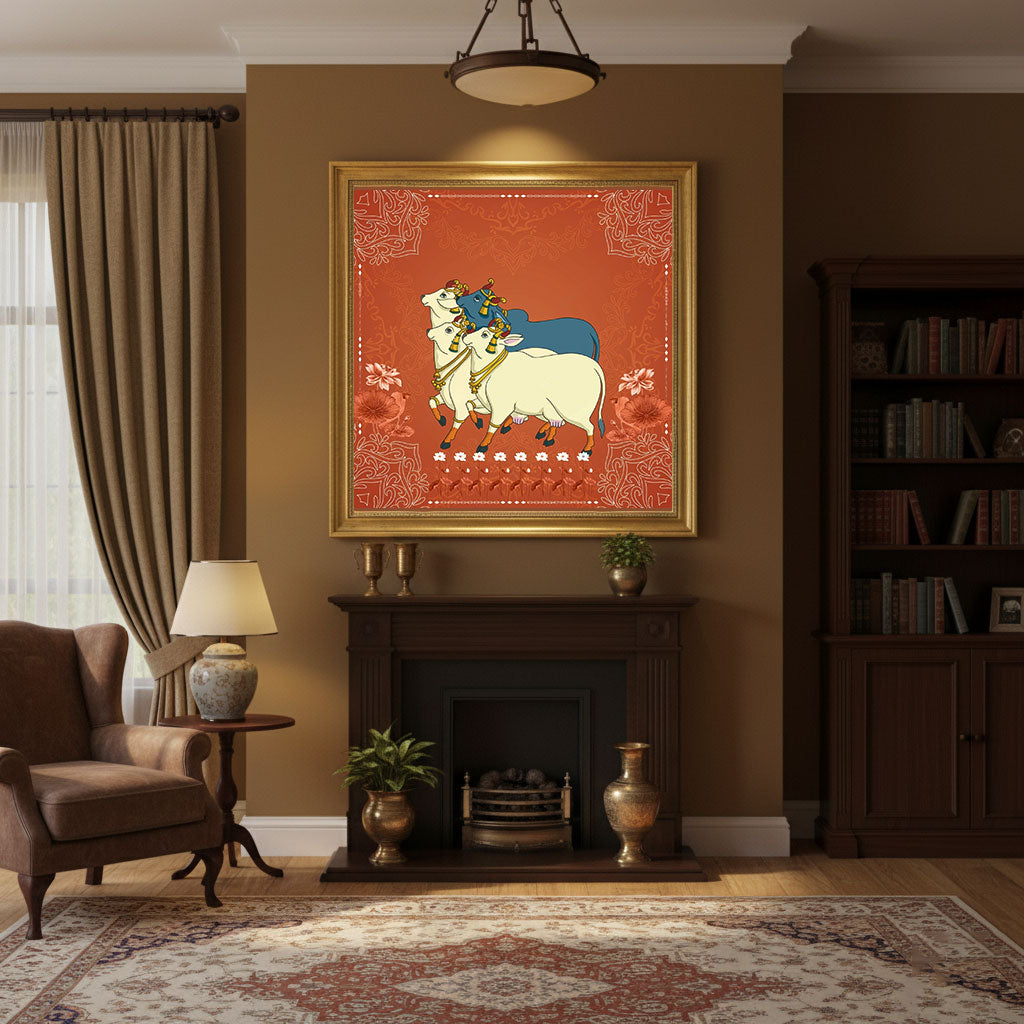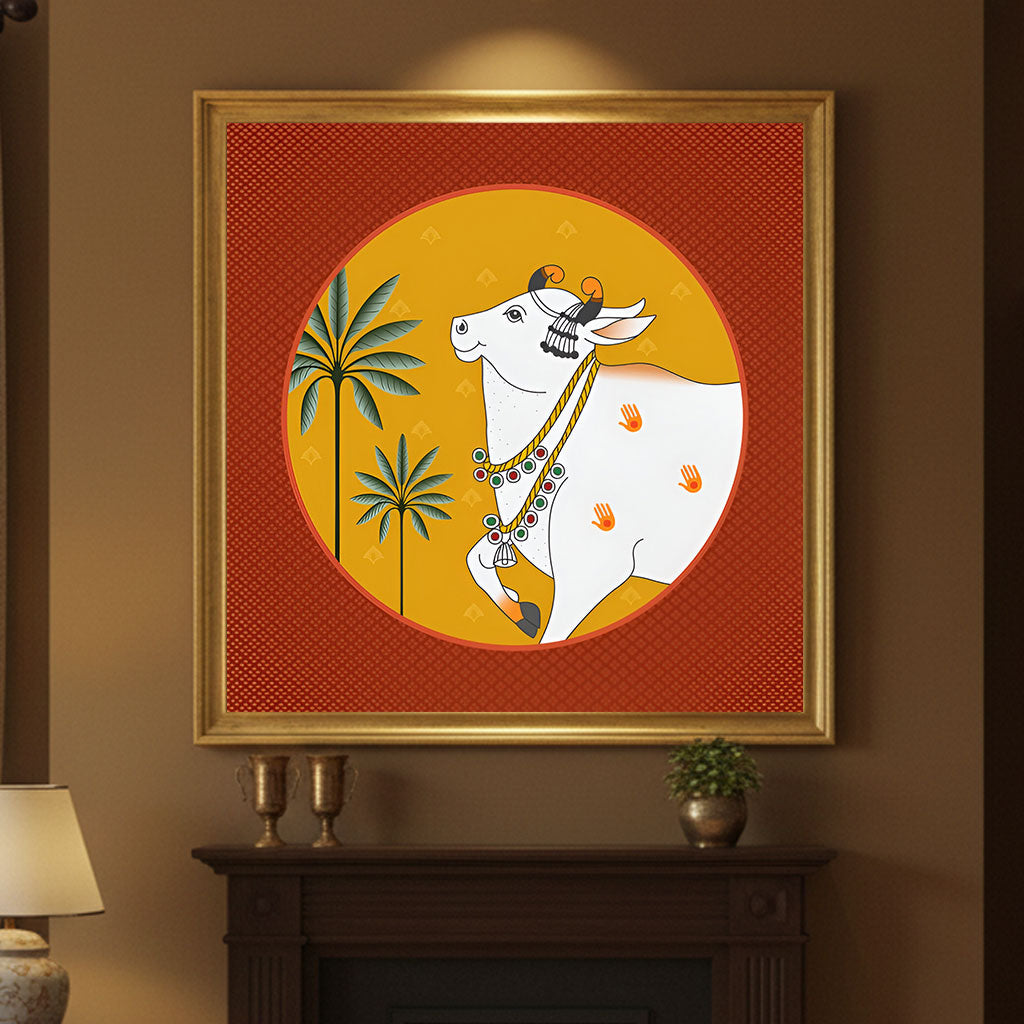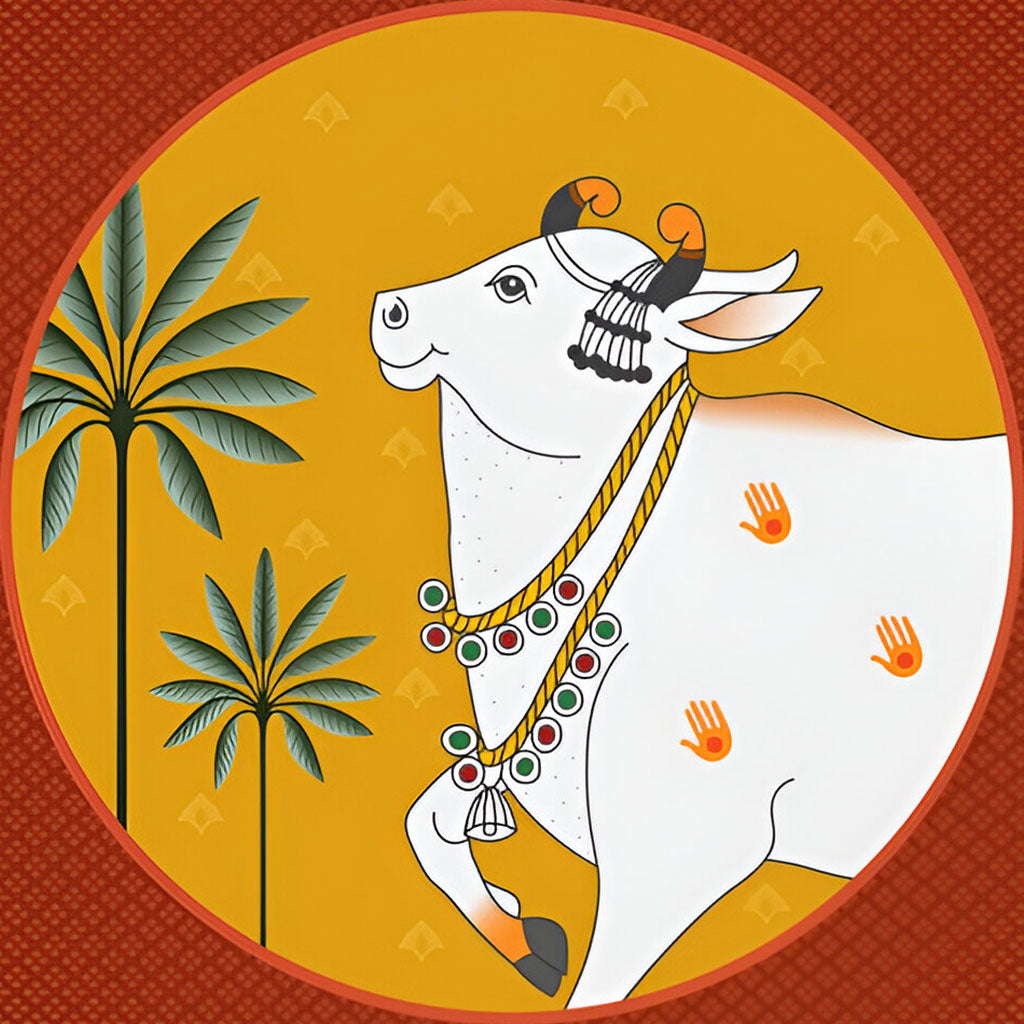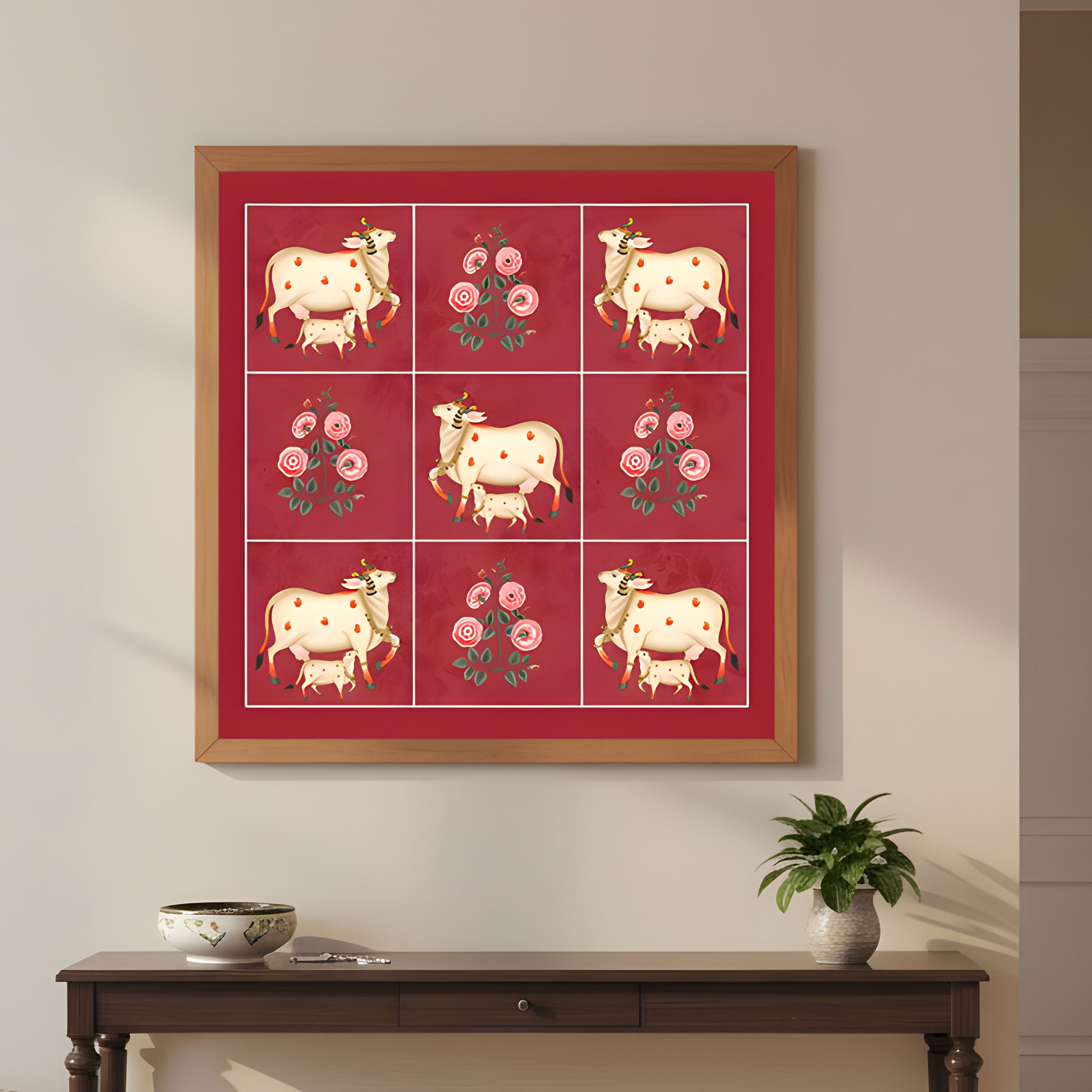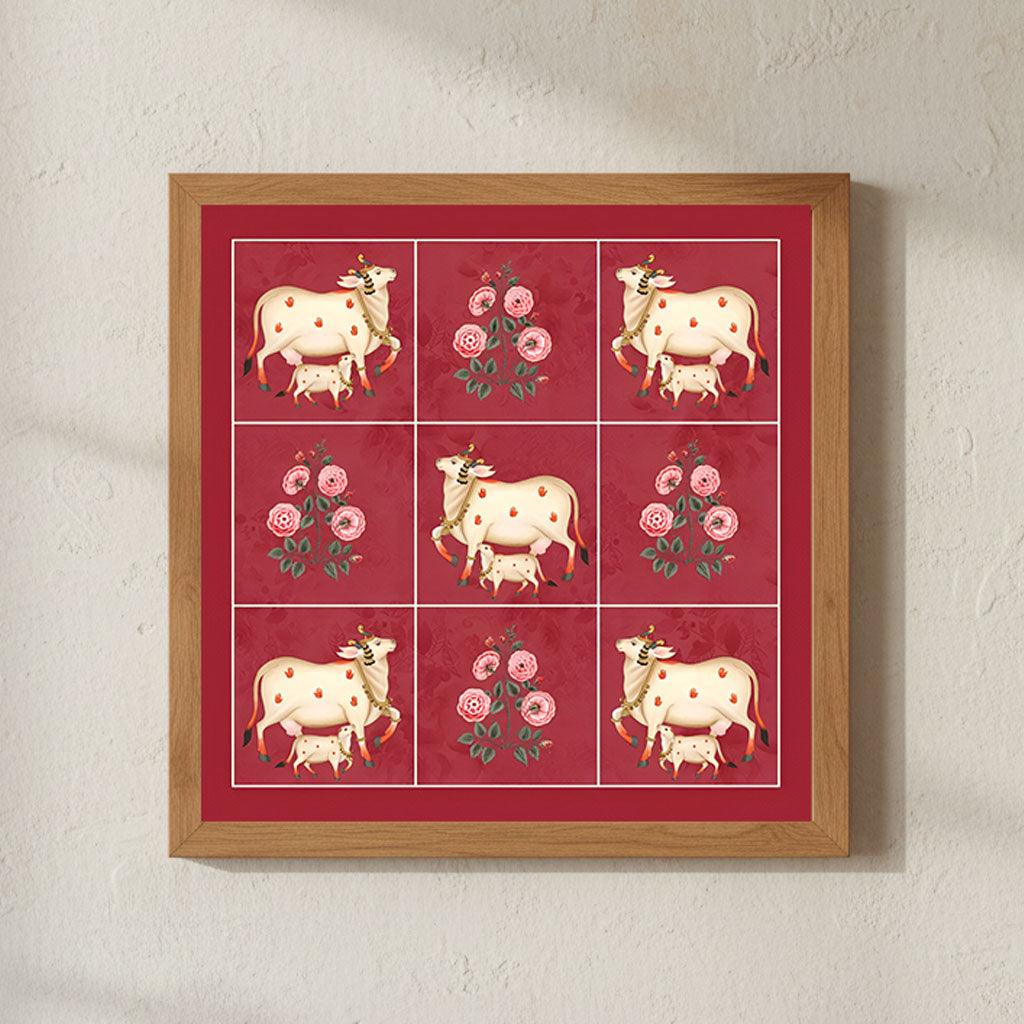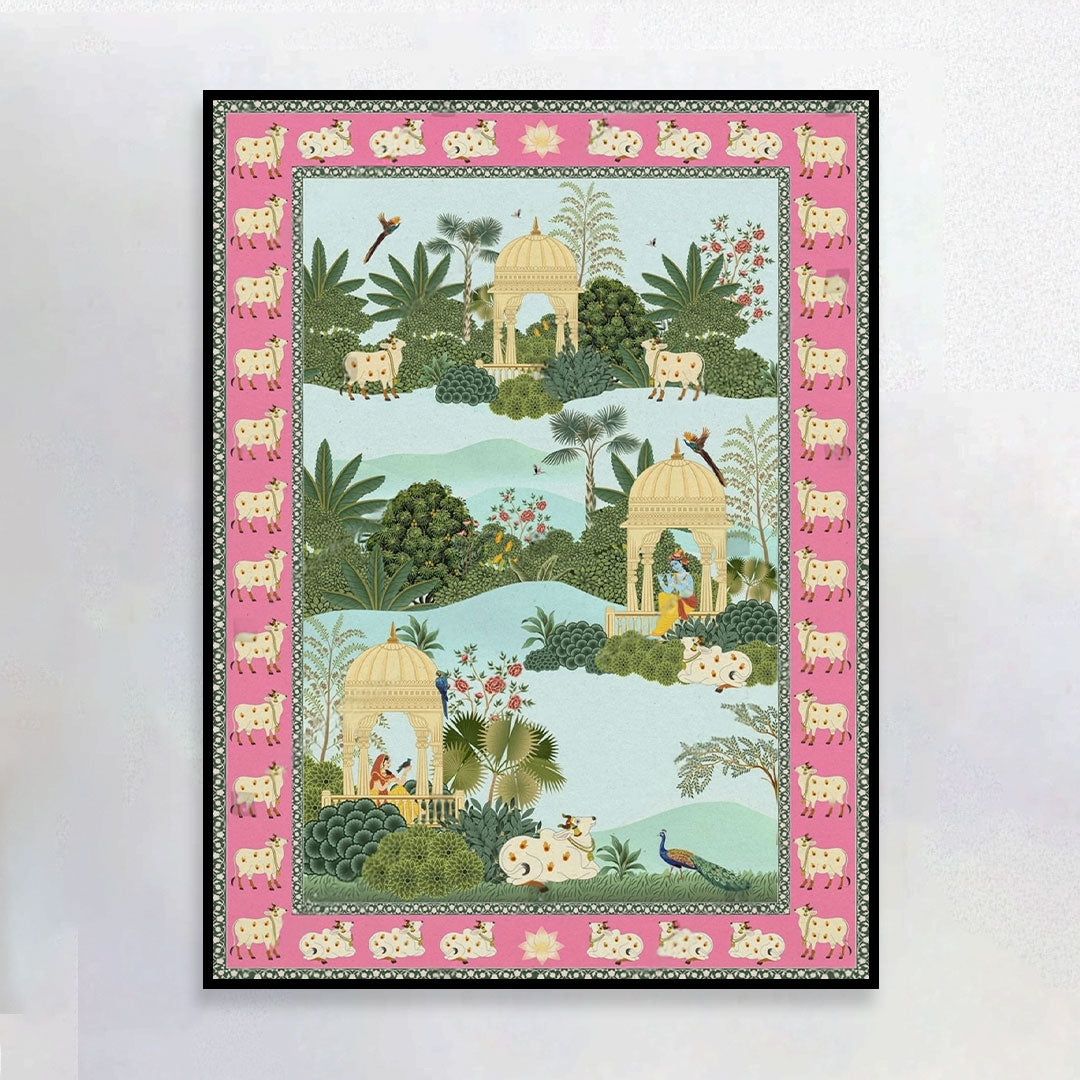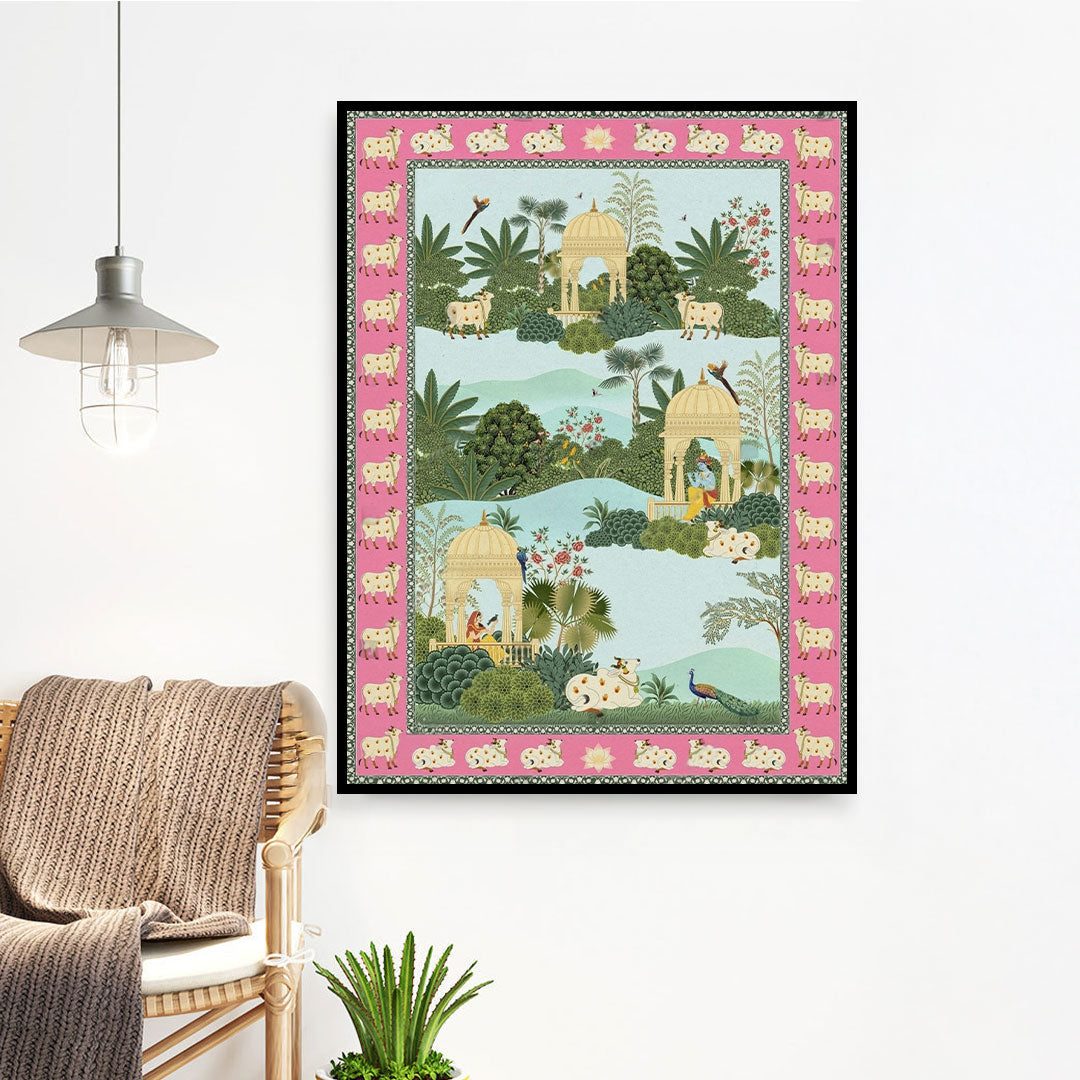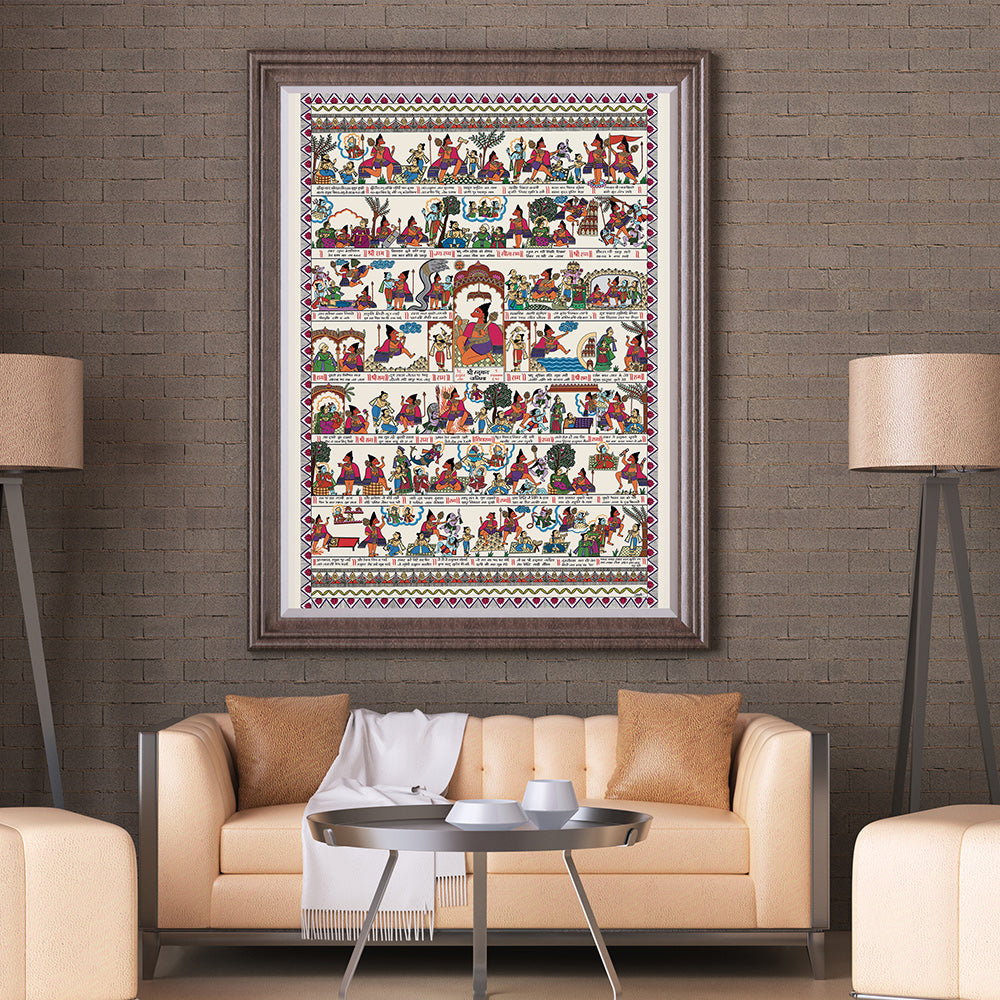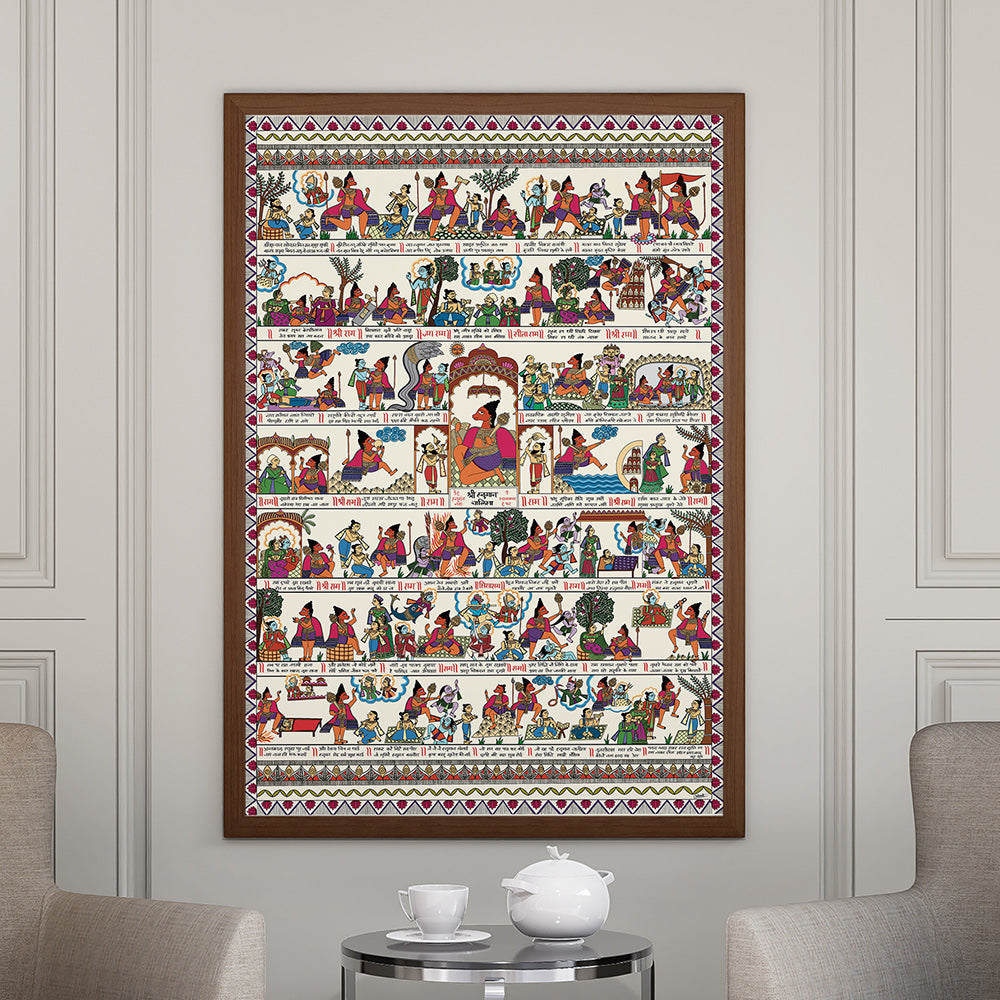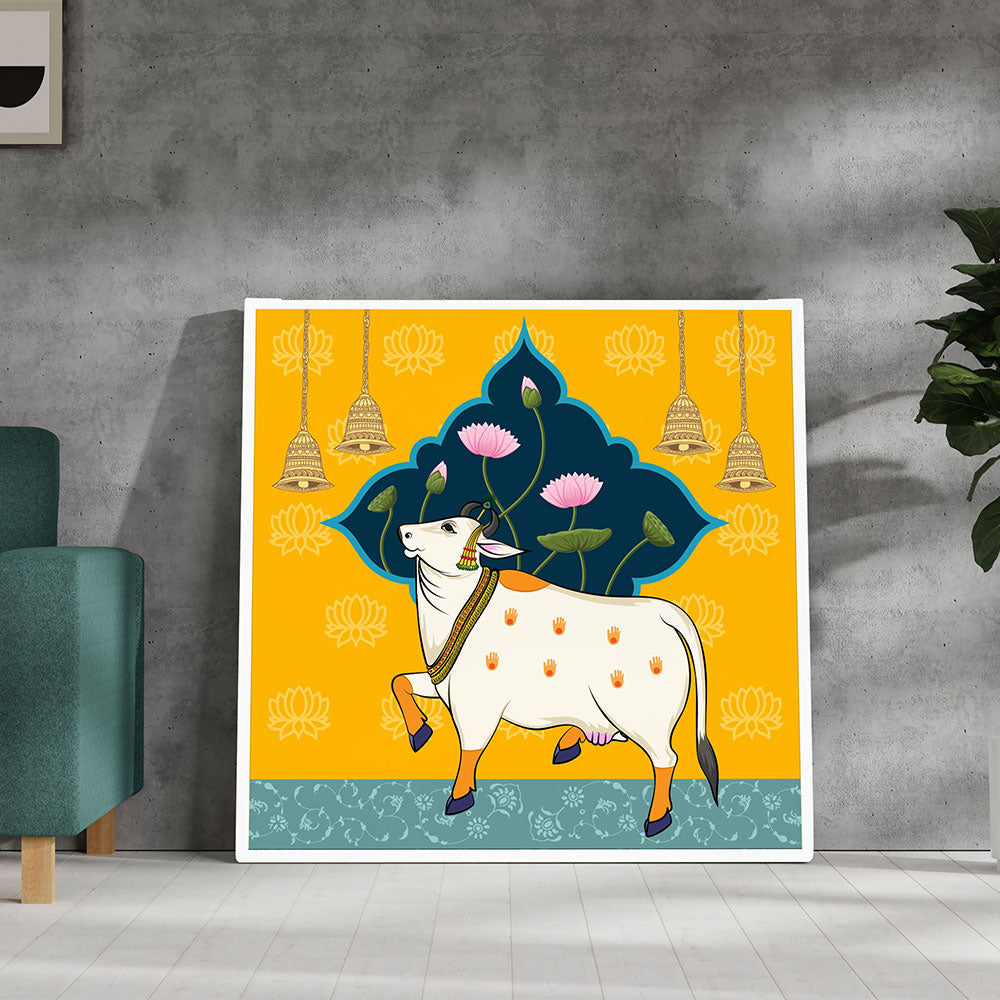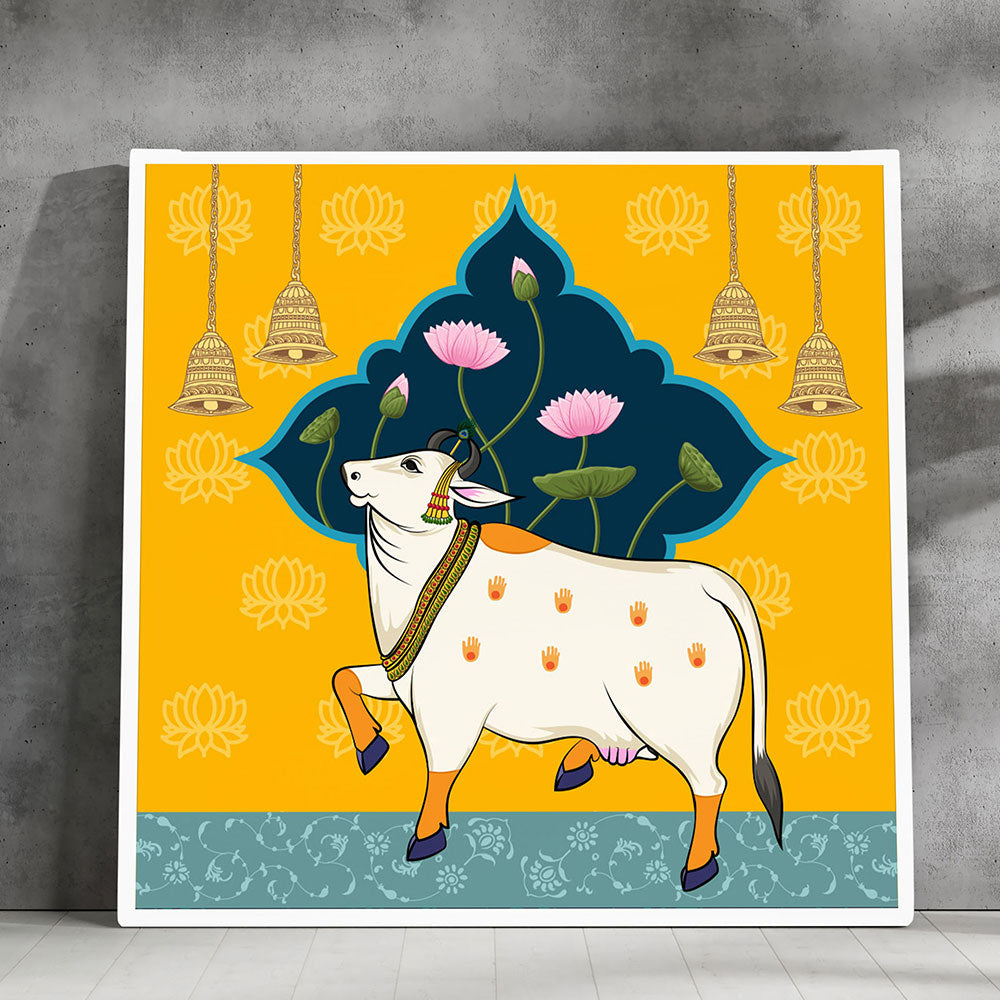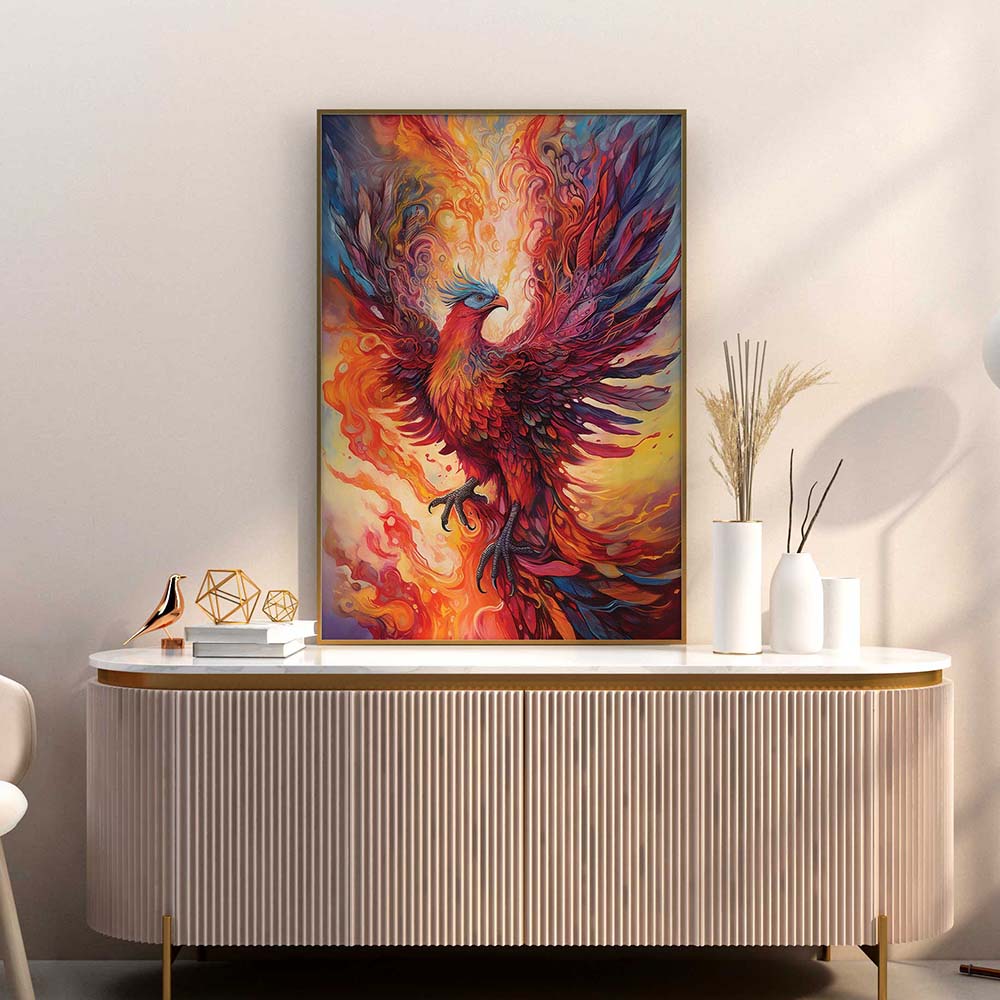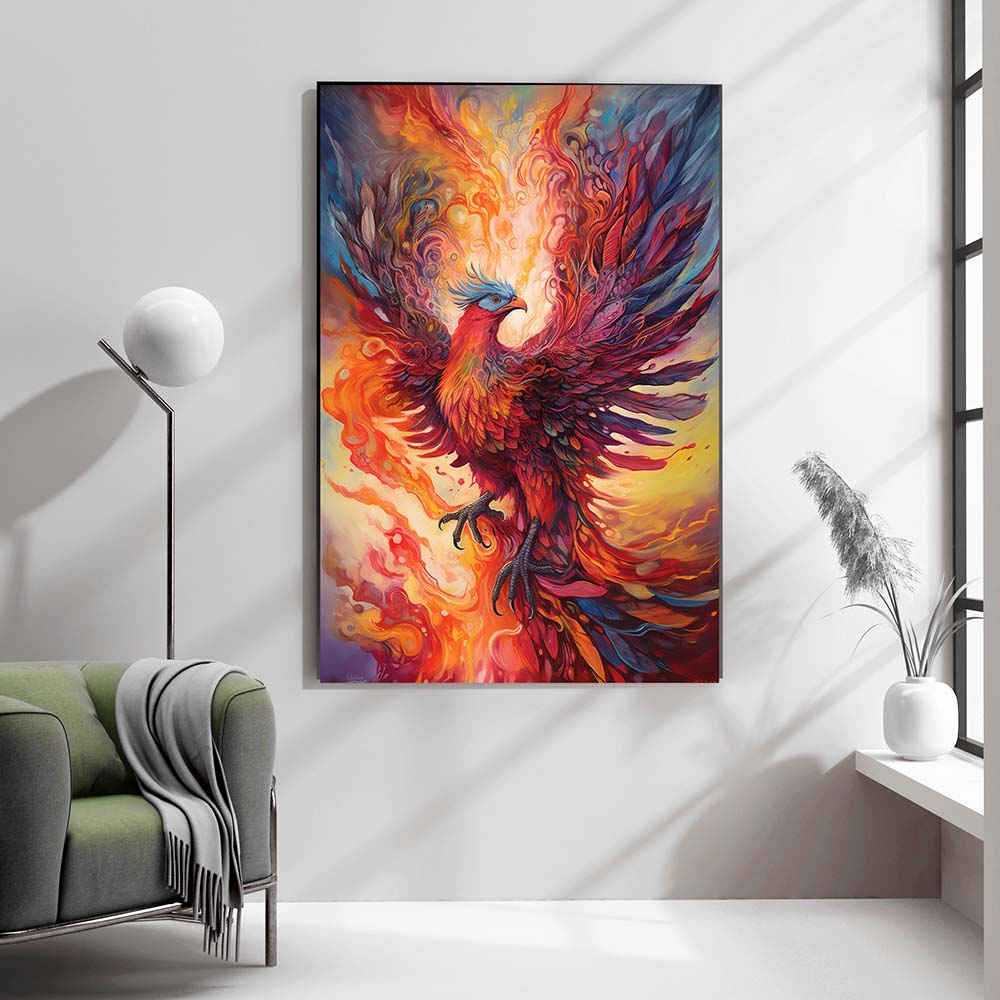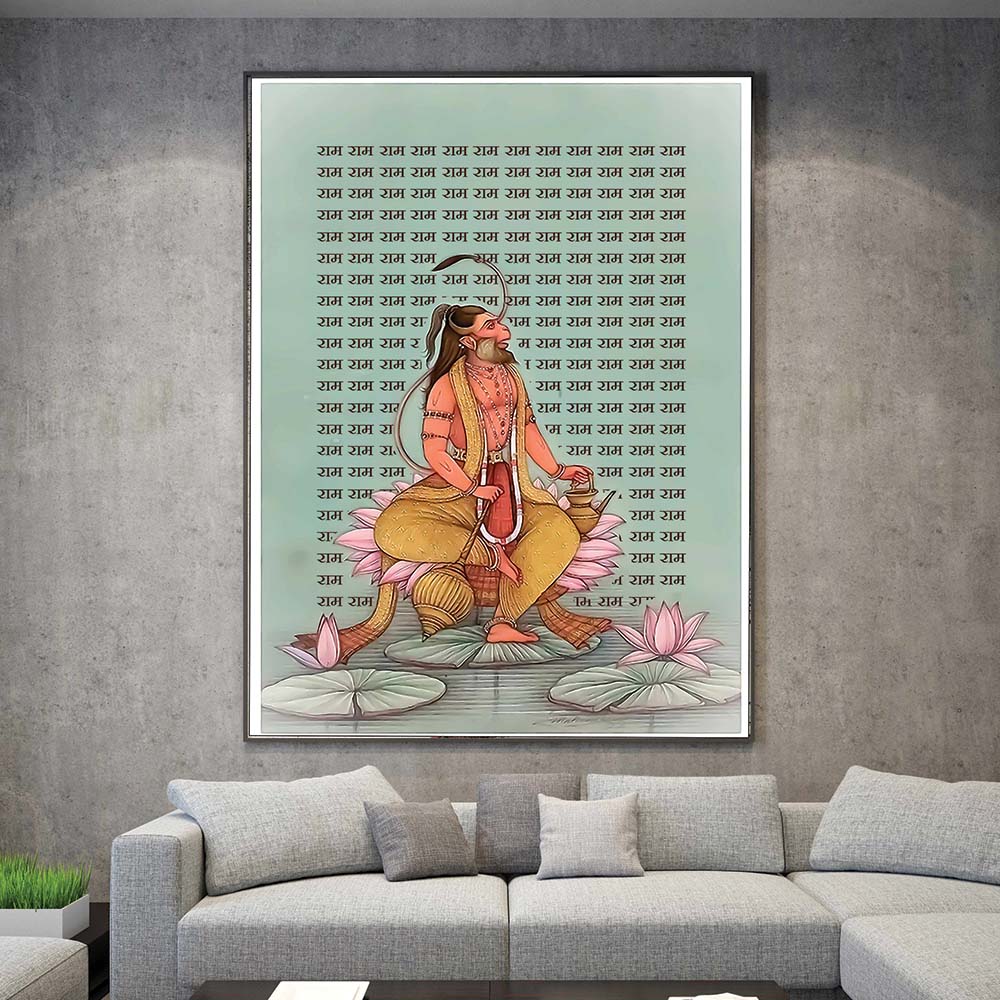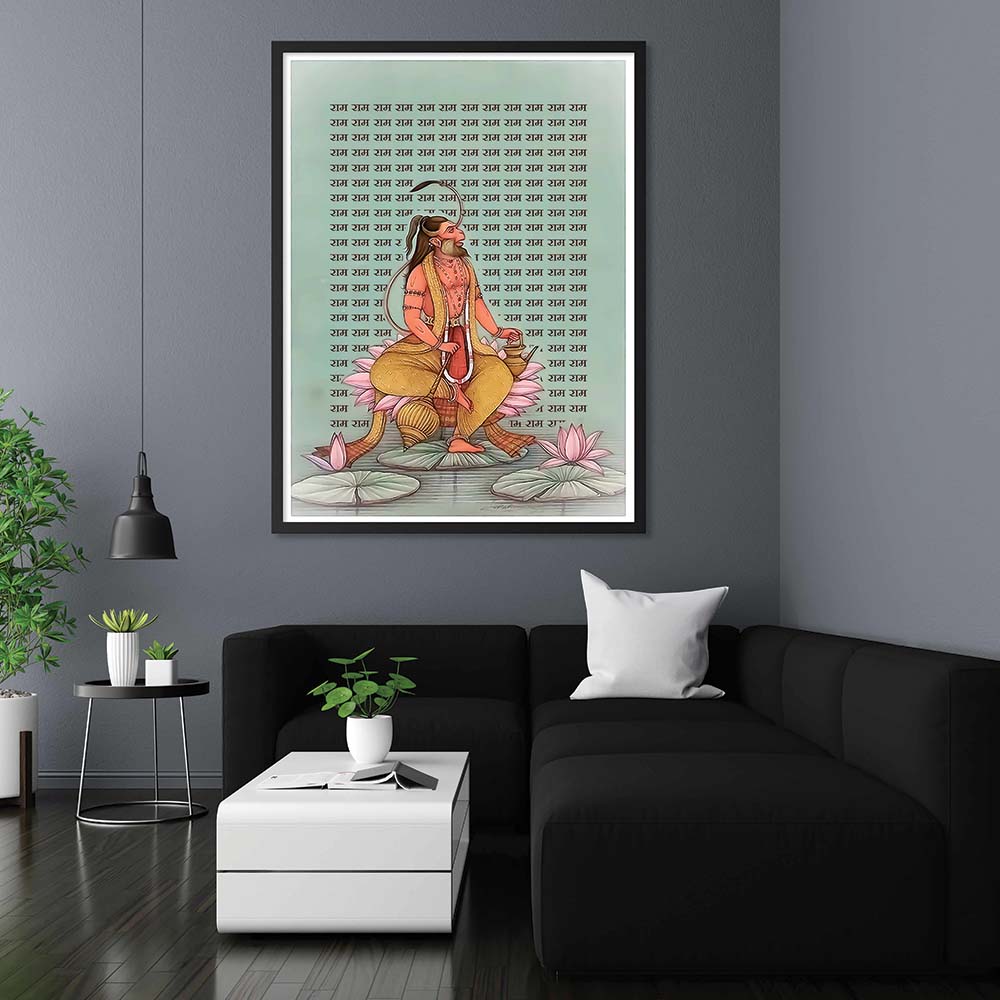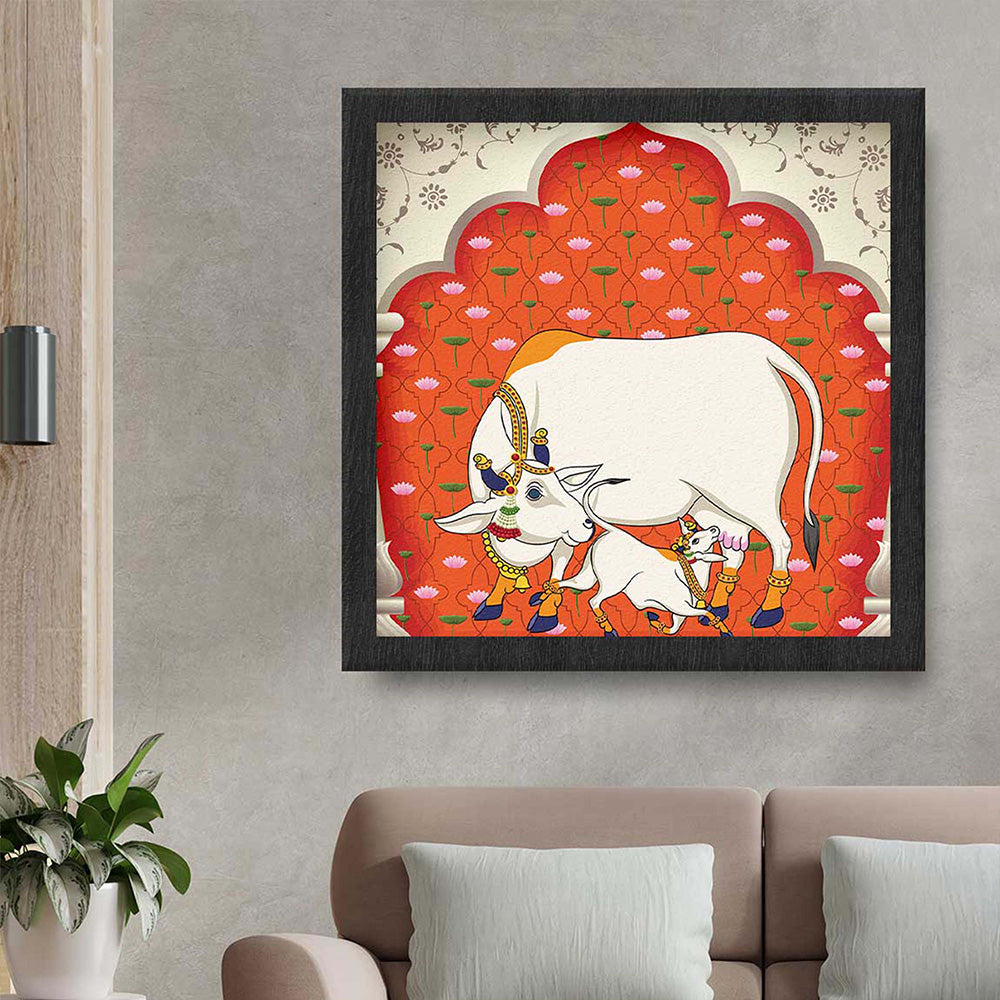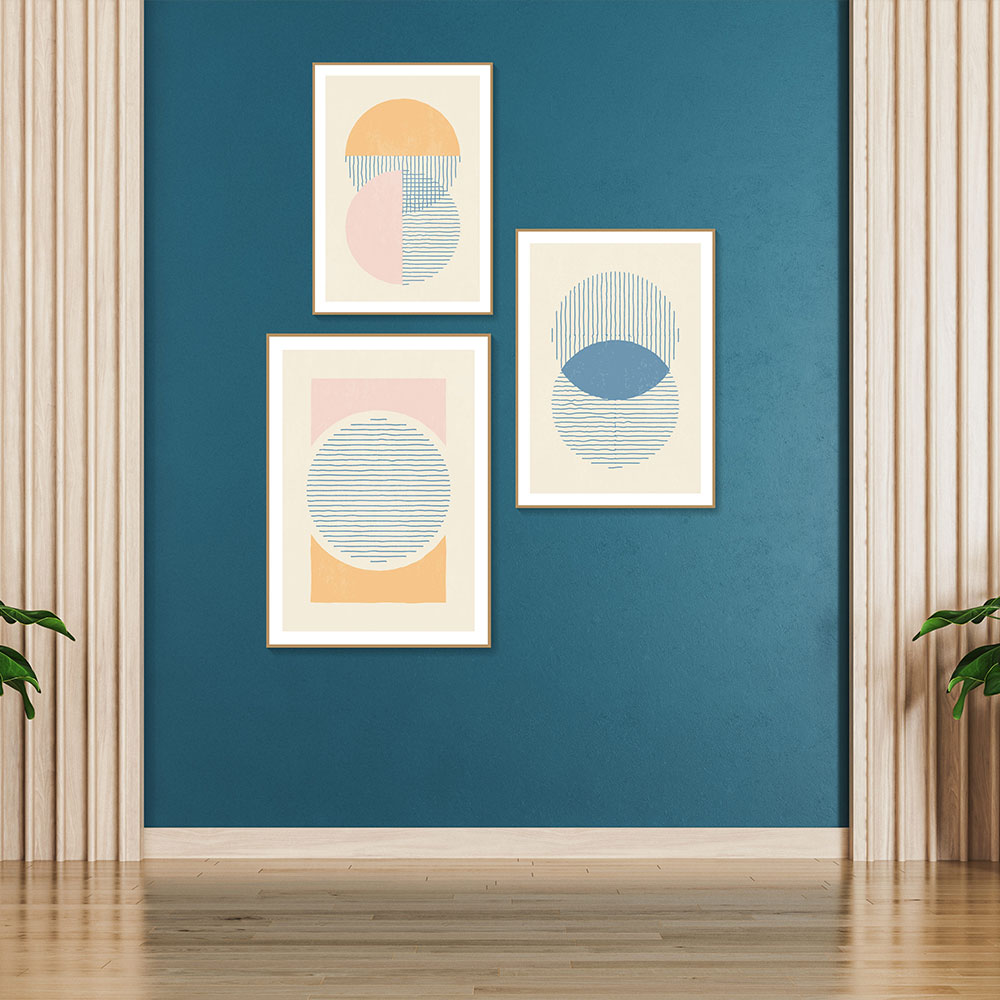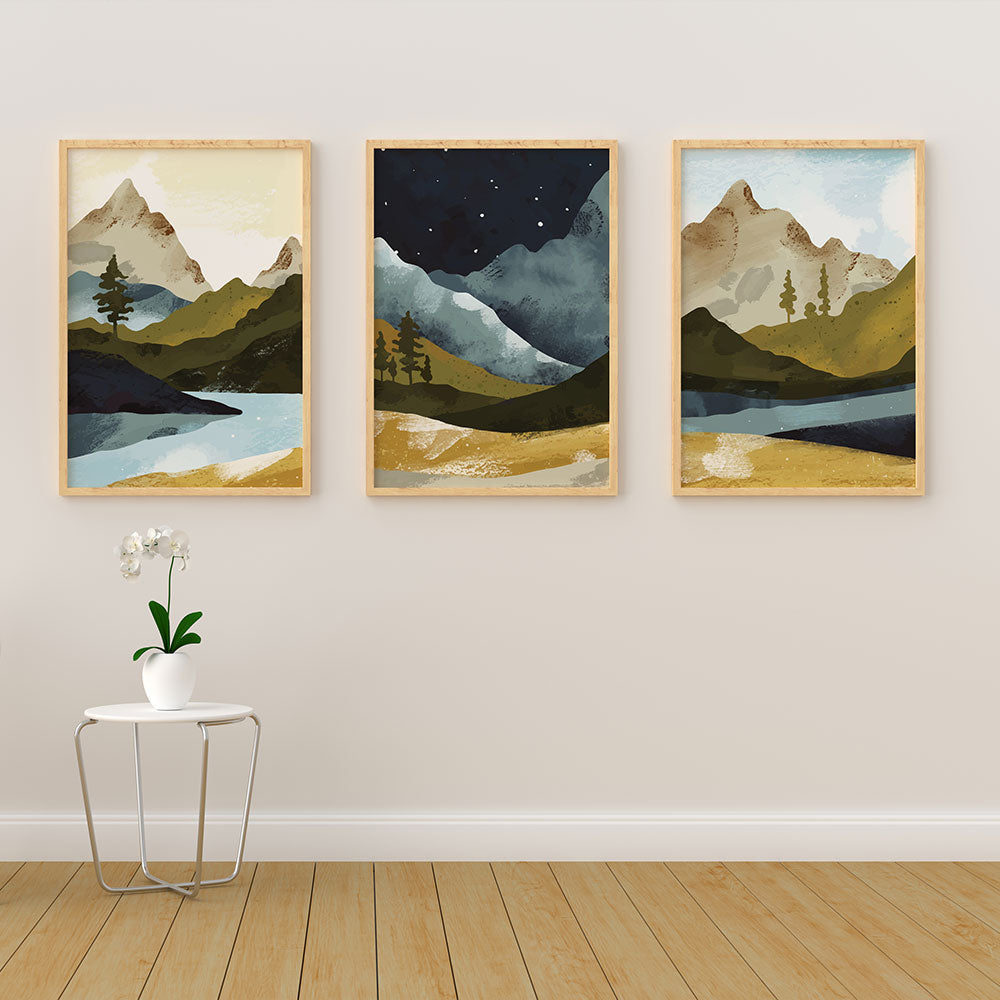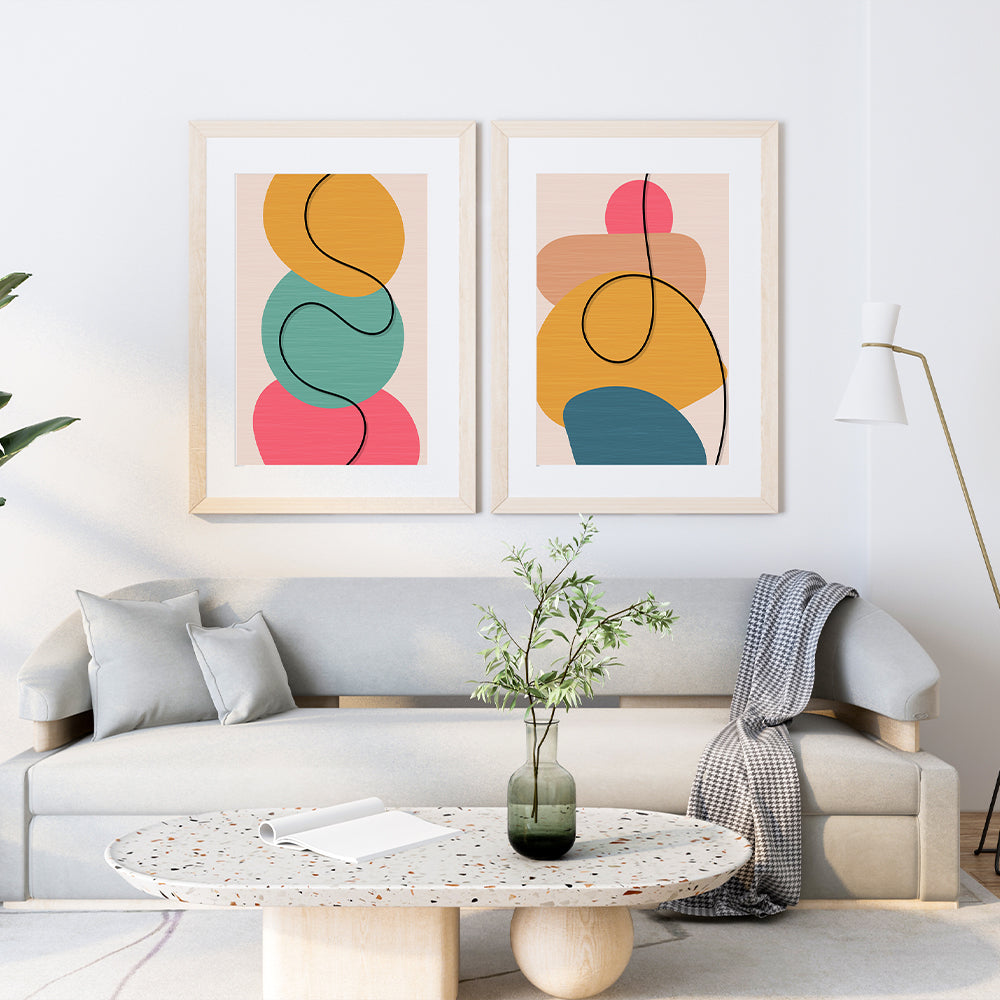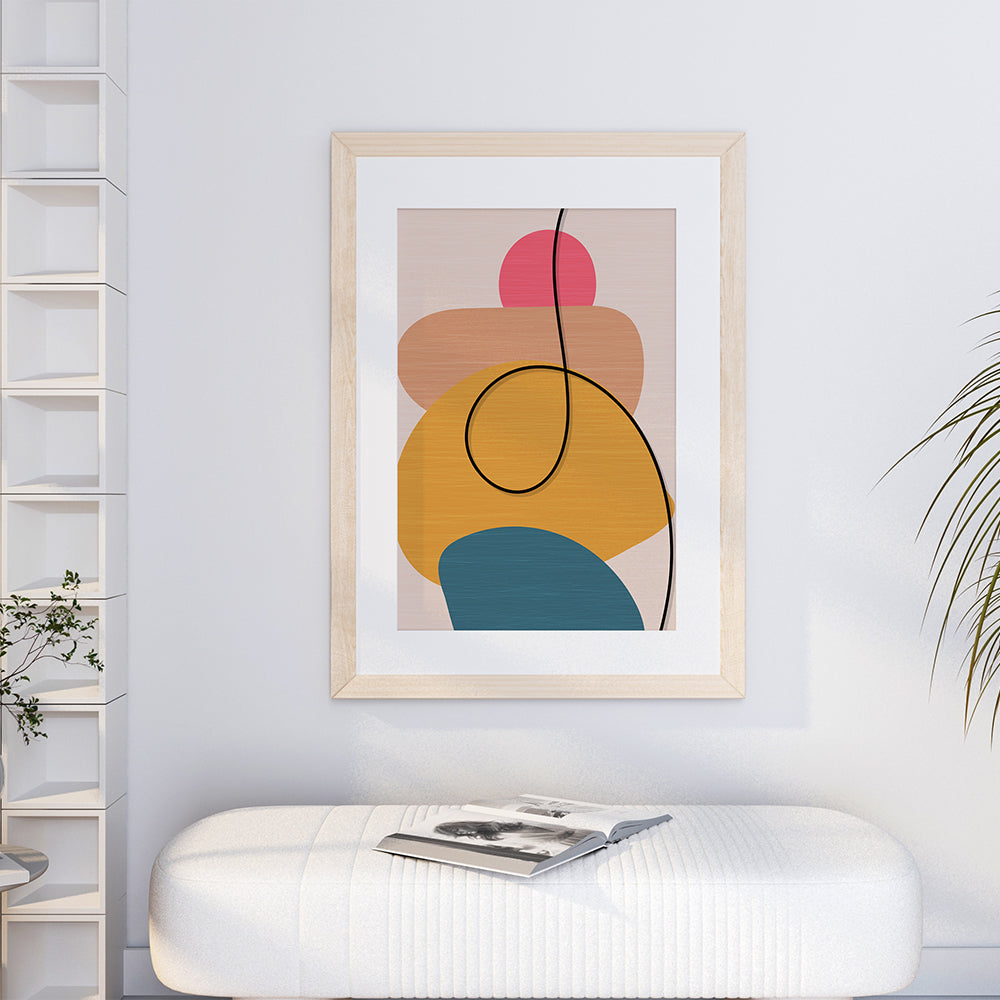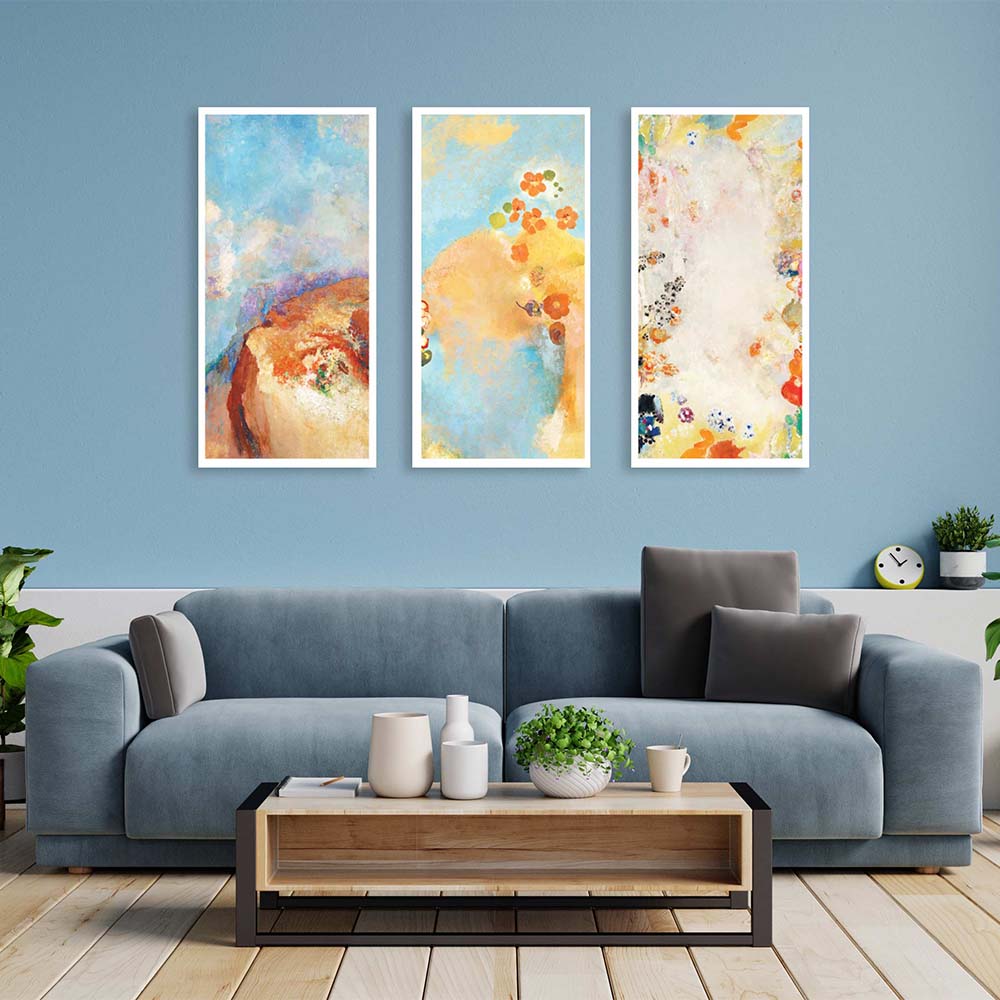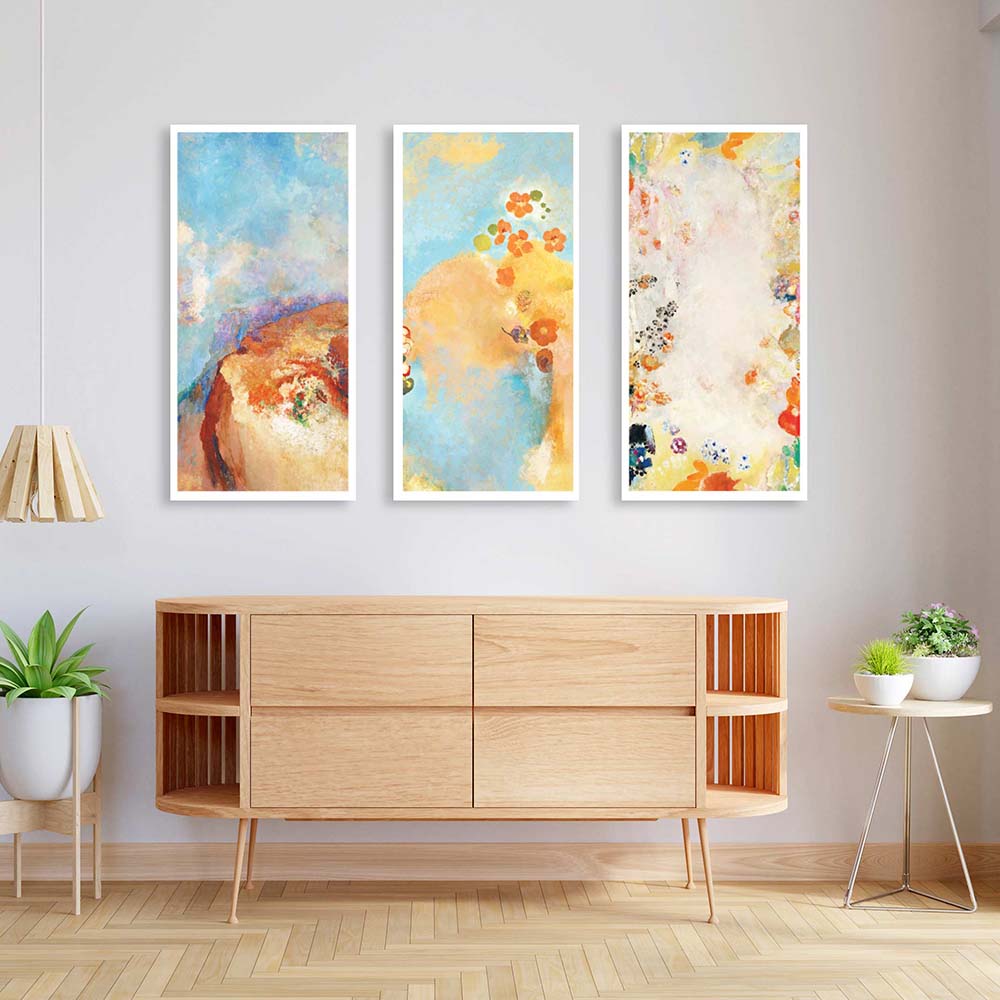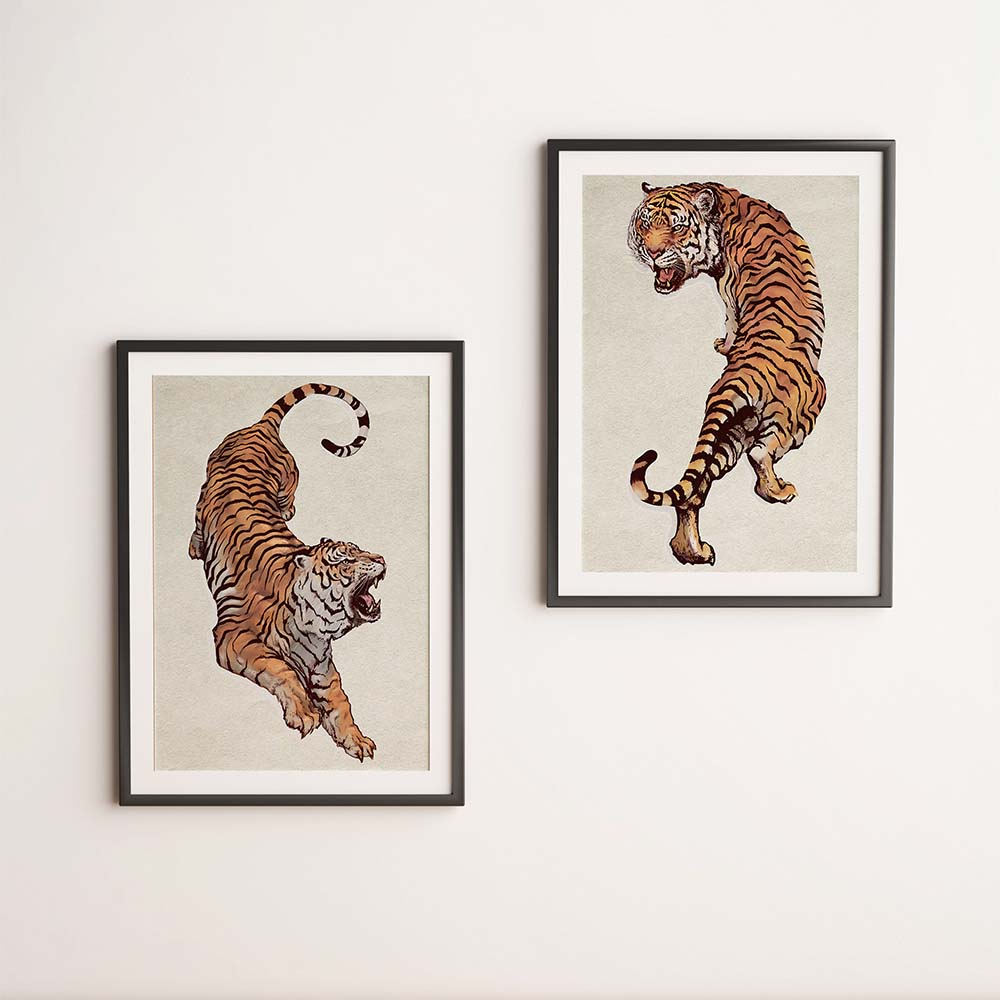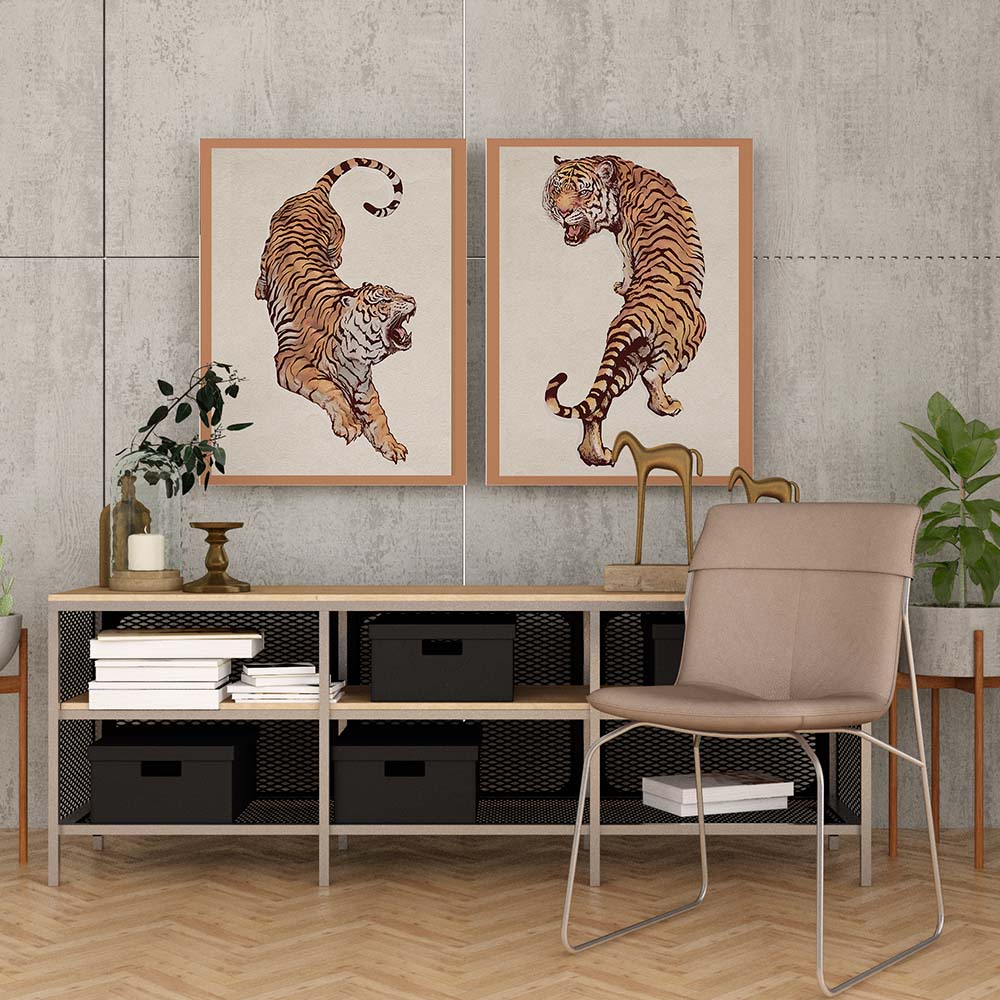The Ancient Stories Woven in Pichwai: A Journey into Indian Devotional Art
Imagine standing before a painting so rich in detail, so vibrant in color, and so steeped in spiritual narrative that it feels less like a static image and more like a window into a divine realm. This is the magic of Pichwai art, a traditional Indian folk art form that transcends mere decoration, offering a profound glimpse into centuries of devotion, storytelling, and meticulous craftsmanship.
At Krutik, we believe art is a bridge – connecting cultures, conveying emotions, and preserving heritage. Our collection, particularly our exquisite Pichwai pieces, embodies this philosophy. In a world increasingly driven by fleeting trends, Pichwai stands as a testament to timeless beauty and spiritual depth.
Join us on a captivating journey as we unravel the ancient stories woven into every thread and brushstroke of Pichwai, exploring its origins, its divine narratives, and its enduring appeal in contemporary homes worldwide.

What is Pichwai Art? An Introduction to a Sacred Tradition
The word "Pichwai" (pronounced PICH-wai) literally translates to "that which hangs at the back" (from 'pichh' meaning back and 'wai' meaning hanging). These intricate devotional paintings were traditionally hung behind the idol of Lord Shrinathji – a unique 7-year-old manifestation of Krishna – in the inner sanctum of the Shrinathji Temple in Nathdwara, Rajasthan, India.
Far from being static backdrops, Pichwais are dynamic, ever-changing elements of worship. They are created to depict specific seasons, festivals, or divine lilas (pastimes) of Lord Krishna, changing with the temple's daily rituals and seasonal celebrations. Each Pichwai is a visual prayer, an elaborate offering, and a narrative tapestry woven with devotion.
Key Characteristics of Pichwai:
-
Subject Matter: Almost exclusively revolves around the life and exploits of Lord Krishna, particularly Shrinathji.
-
Intricate Detail: Characterized by unbelievably fine brushwork, minute details, and repetitive patterns.
-
Vibrant Colors: A rich palette dominated by natural pigments derived from minerals and plants, with deep blues, lush greens, vibrant reds, and shimmering golds being prominent.
-
Symbolic Motifs: Repetitive use of iconic symbols like cows (especially Kamadhenu, the divine cow), lotuses, peacocks, gopis (cowherd girls), and Krishna himself in various forms.
-
Material: Traditionally painted on cotton cloth, often starched to create a stiff surface, though contemporary versions might use other bases for specific applications.
The Divine Genesis: Nathdwara, Shrinathji & the Vallabha Sampradaya
To truly appreciate Pichwai, one must understand its roots in the Vallabha Sampradaya, a Vaishnava sect of Hinduism founded by Shri Vallabhacharya in the 15th century. This sect emphasizes the worship of Krishna through Pushtimarg, the "path of grace."
The central deity of this sect, Shrinathji, holds a fascinating history. Legend has it that the idol of Shrinathji self-manifested from the Govardhan Hill. During Aurangzeb's iconoclastic reign in the 17th century, the idol was transported from Vrindavan to Mewar in Rajasthan for safekeeping, eventually finding its permanent home in the town of Nathdwara ("Gateway of the Lord").
Nathdwara swiftly became the epicentre of Pichwai art. The temple artists, known as the Chitrakars, were not just painters; they were devotees whose art was an act of worship. Their skills were passed down through generations, making Pichwai a cherished hereditary craft. Each family often specialized in particular motifs or styles, contributing to the rich diversity within the tradition.
The Epic Narratives: Stories Woven into Every Pichwai
The true soul of Pichwai lies in the myriad stories it meticulously narrates. Every painting is a window into Lord Krishna's divine lilas, offering devotees a visual medium to connect with his playful, mischievous, heroic, and compassionate nature.
Key Themes and Festivals Depicted in Pichwai:
-
Childhood Pastimes (Bala Lila): Many Pichwais charmingly depict Krishna's childhood adventures in Gokul and Vrindavan. You might see him as a mischievous butter thief, lifting the Govardhan Hill to protect his villagers from Indra's wrath, or playing with his cowherd friends.
-
Rasleela & Gopis: The enchanting Rasleela, Krishna's divine dance with the gopis, is a recurring and beloved theme. These Pichwais often burst with vibrant colors, showcasing the ecstatic devotion of the gopis and Krishna's mesmerizing presence amidst them.
-
Seasonal Celebrations (Utsavs): Pichwais are intrinsically linked to the Hindu calendar and the temple's festive cycle.
-
Sharad Purnima (Autumn Full Moon): Depicts Krishna's romantic Rasleela under the moonlight, surrounded by gopis and a lush, moonlit landscape. The moon motif is prominent here.
-
Govardhan Puja: Commemorates Krishna lifting the Govardhan Hill. Pichwais for this festival often feature Shrinathji with his left arm raised, protecting his devotees, with cows and villagers gathered beneath.
-
Holi (Festival of Colors): Explosions of color dominate these Pichwais, showing Krishna and Radha playing with vibrant powders (gulal), surrounded by joyous devotees.
-
Janmashtami (Krishna's Birthday): Depicts various stages of Krishna's birth and early childhood, often featuring a cradle or scenes of celebration.
-
Diwali: Showcases festive scenes with lamps (diyas), sometimes featuring Shrinathji adorned for the festival of lights.
-
Monsoon/Rainy Season: Features lush green landscapes, peacocks dancing, and dark, brooding clouds, representing Krishna's love for the natural world.
-
Shringar (Adornment) of Shrinathji: Many Pichwais focus on the elaborate adornment of Shrinathji himself, depicting the deity in various outfits and ornaments specific to different rituals or festivals. These showcase the meticulous details of his seva (service).
-
Nature & Symbolism: Beyond Krishna's direct portrayal, nature elements are highly symbolic:
-
Lotuses: Symbolize purity, beauty, and spiritual enlightenment, often appearing in various forms throughout the compositions.
-
Cows: Sacred in Hinduism, cows (especially Kamadhenu) represent abundance, fertility, and divine nourishment. Their presence in Pichwais underscores Krishna's identity as a cowherd.
-
Peacocks: Symbolize beauty, grace, and spiritual awakening, often depicted dancing in the rain, particularly in monsoon-themed Pichwais.
The Visual Language of Pichwai: Colors, Motifs & Intricate Details
The visual appeal of Pichwai is undeniable, stemming from its meticulous artistry and vibrant palette.
-
Natural Pigments: Traditionally, colors were derived from natural sources:
-
Indigo for deep blues (Krishna's complexion, night sky).
-
Malachite for rich greens (foliage, peacock feathers).
-
Cochineal/Vermillion for reds (passion, celebration).
-
Lamp black for black.
-
Lime/Conch shell powder for white.
-
Gold and silver foils: Often applied to add shimmering highlights to jewelry, ornaments, and divine halos, making the paintings truly gleam.
-
The Power of Repetition: The intricate detailing often involves repetitive patterns – tiny flowers, swirling clouds, perfectly rendered leaves, and miniature figures. This repetition creates a mesmerizing quality, drawing the viewer deeper into the narrative.
-
Iconic Motifs Explained:
-
Kamadhenu: The wish-granting divine cow, often depicted with a celestial body and various deities within her, signifying abundance and fulfillment.
-
Gopis: Symbolize the individual soul's intense longing and devotion for the divine. Each gopi's pose and expression subtly convey their emotional state.
-
Lotus: Appears in various forms – blooming, as borders, on garments, and even as the "lotus feet" of the deity – signifying purity, spiritual growth, and divine beauty.
The painstaking process begins with preparing the cotton cloth, sketching the outline, and then filling in the colors with incredibly fine brushes, often made from squirrel hair. The gold and silver work is added last, bringing the divine stories to life with a luminous glow.
Pichwai in the Modern World: Beyond the Temple Walls
While deeply rooted in devotion and tradition, Pichwai art has found a vibrant new life beyond the temple sanctums. Its unique aesthetic and rich storytelling have captivated art connoisseurs, interior designers, and spiritual seekers worldwide.
Today, Pichwai is celebrated not just as devotional art, but as fine art. It has successfully transitioned into homes, galleries, and collections across the globe, serving various purposes:
-
A Statement Piece: A large Pichwai can serve as a stunning focal point in a living room, drawing immediate attention and sparking conversation.
-
Infusing Culture & Spirituality: For those seeking to connect with Indian heritage or bring a sense of spiritual calm into their modern living spaces, Pichwai offers an authentic and powerful medium.
-
Versatile Decor: While traditional Pichwais are large, contemporary artists often create smaller, more adaptable pieces, or abstract interpretations that retain the essence of the form while fitting modern aesthetics. These can easily be incorporated into bedrooms, meditation spaces, or even offices seeking a touch of serenity and cultural richness.
-
Preserving Heritage: By purchasing authentic Pichwai art, collectors contribute directly to the livelihood of the Chitrakar families and help preserve this invaluable artistic heritage for future generations.
Krutik's Pichwai Collection: Authenticity, Artistry & Global Access
At Krutik, our passion for authentic Indian folk art is at the heart of everything we do. Our Pichwai collection stands as a testament to this commitment.
Each Pichwai piece in our collection is:
-
Handcrafted with Devotion: We collaborate directly with skilled Chitrakar artists in Nathdwara and surrounding regions, who continue to practice this ancient art form with the same dedication and meticulous attention to detail as their ancestors.
-
A Narrative Masterpiece: We offer a diverse range of Pichwais depicting various stories of Lord Krishna – from the playful Janmashtami scenes to the majestic Govardhan Puja, and the ethereal Sharad Purnima. Each piece invites you to delve into a chapter of divine folklore.
-
Authored for Your Space: Whether you seek a grand focal point for your living room, a calming presence for your meditation corner, or a unique piece to enrich your office, our collection offers sizes and themes to suit diverse interior design needs.
-
Globally Accessible: With our commitment to shipping to over 120 countries, the timeless beauty and spiritual resonance of Pichwai art are now within reach of enthusiasts and collectors worldwide.
When you choose a Pichwai from Krutik, you're not just acquiring a painting; you're bringing home a piece of living history, a prayer on canvas, and a vibrant echo of ancient Indian devotion.
Conclusion: A Legacy of Love on Canvas
Pichwai art is more than just a painting; it's a profound cultural artifact, a devotional offering, and a visual legacy of love for Lord Krishna. From its origins in the sacred town of Nathdwara to its place in global art collections, Pichwai continues to captivate hearts with its intricate beauty and deeply spiritual narratives.
By embracing Pichwai, you invite centuries of rich Indian heritage and divine storytelling into your life. It's an opportunity to create a space that not only looks beautiful but also resonates with peace, prosperity, and a timeless connection to the sacred.
Ready to embark on your own journey into the divine world of Pichwai? Explore Krutik's exclusive collection of handcrafted Pichwai art and find the perfect piece to weave ancient stories into the fabric of your home.
Which story or festival depicted in Pichwai art do you find most captivating? Share your thoughts in the comments below!
